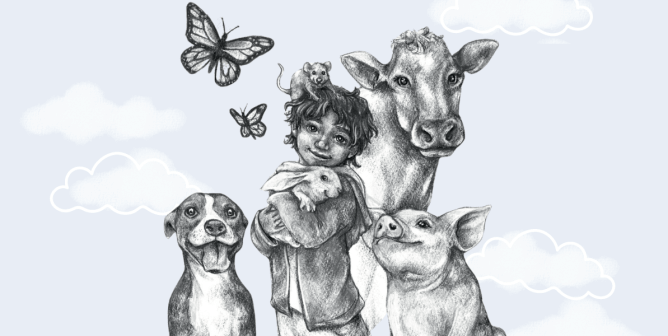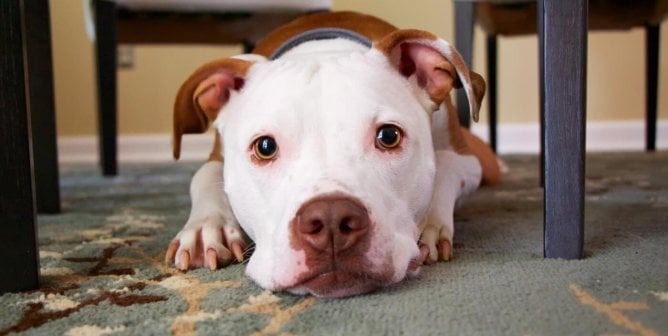What’s the Problem With Classroom ‘Pets’?
Many teachers consider bringing animals into their classrooms as a way to teach students about responsibility, pet care, animal science, and more. We know that many teachers who keep classroom “pets” do so with good intentions and a love for animals. But a classroom simply isn’t a suitable home for an animal, and there are many factors that kind teachers need to consider before bringing one into theirs.
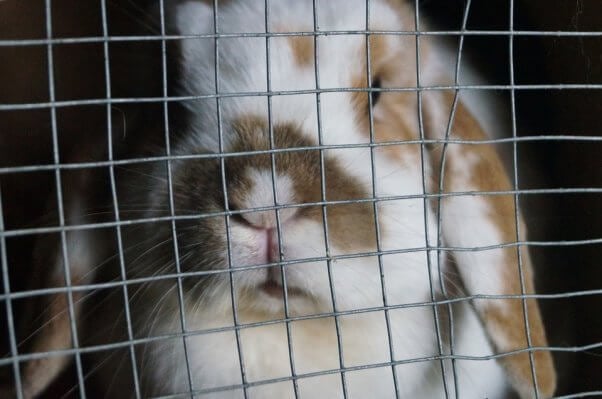
While children can undoubtedly benefit from knowing and learning to care for animals, those lessons must be taught in situations where all variables are controlled—a virtually impossible feat in a bustling classroom full of curious youngsters. There are many ways to teach students responsibility and appreciation for animals that don’t involve putting vulnerable lives at risk.
As educators, it’s our responsibility to teach students that each and every life is valuable. Here are facts that every teacher considering a classroom “pet” needs to know:
A Classroom Is an Unhappy ‘Home’ for Animals
When sensitive animals are confined to small cages or tanks in classrooms, their needs are rarely met and their natural instincts can’t be accommodated. For example, mice and other small mammals are nocturnal, yet they’re kept in brightly lit classrooms and regularly removed from their cages throughout the day, completely disrupting their natural sleep rhythms. Rabbits and rodents are prey animals, so they instinctively try not to show that they’re sick or in pain—and they become terrified very easily, are fearful of being picked up by unfamiliar hands, and are even prone to suffering from heart attacks in stressful situations. Imagine how distressing it must be for animals to be handled by large numbers of children who may not know the correct way to hold them. It’s virtually impossible for an animal in a classroom to be protected at every single moment when children outnumber adults.
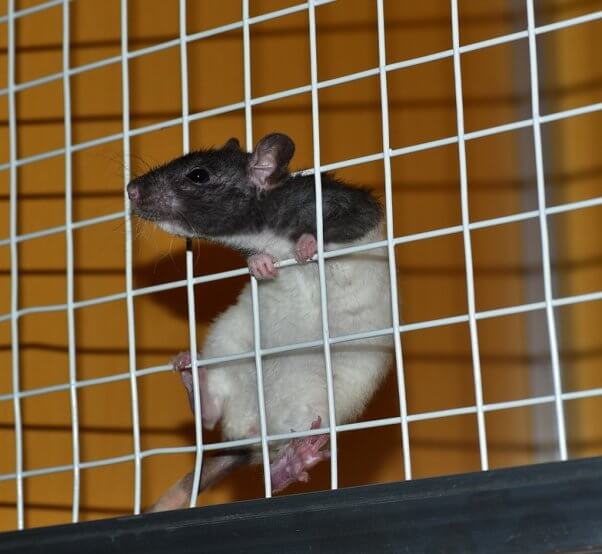
While having classroom “pets” might be tempting and seem like fun, let’s face it: You know that your busy classroom (and your many young learners’ excited, inexperienced hands) are not the best thing for animals—and it’s wrong to discount their needs and well-being.
Classroom ‘Pets’ Are Often Left Alone and Left Behind
Class “pets” are highly vulnerable to illness and neglect, as they’re regularly left unmonitored at night and on the weekends. And when animals are left alone—even overnight—things can quickly take a turn for the worse. There have been countless cases of animals who died of heatstroke in classrooms during warm weekends or perished in the cold when the heat was turned off as everyone else went home. Small animals are at risk of heatstroke in temperatures as low as 82 degrees.
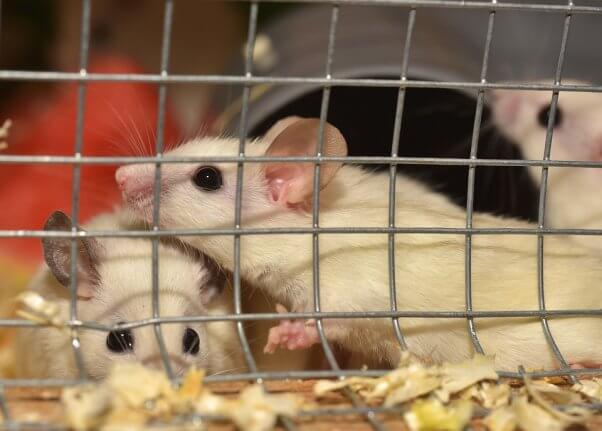
During school breaks, it’s a scramble to find students who can take animals home with them—which presents another problem entirely. More often than not, if students do volunteer, their homes aren’t screened, and they and their families are unprepared for the comprehensive care that small animals require (which can—and often does—lead to tragic consequences). A teacher in Beaverton, Oregon, for example, reported that a “classroom” gerbil who was sent home with a student endured a broken back and died after being played with recklessly. In another case, a rabbit was killed by a dog after being sent home with a student. A household full of kids, other animals, and unpredictable circumstances can be a dangerous place for a defenseless animal whose life depends on proper care.
If no students or teachers can take animals home during school breaks, they usually end up in severely crowded shelters—contributing directly to the homeless-animal crisis. Because of this—as well as the risks involved in keeping animals in the classroom—some shelters have even implemented rules against adopting animals for classroom use.
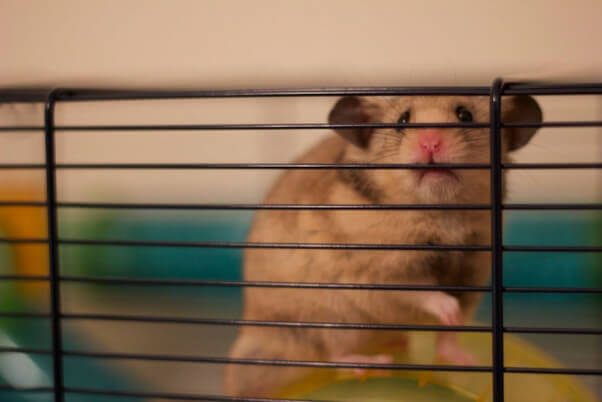
And what happens to “classroom” animals in an emergency? While these situations are (thankfully) uncommon, they do occur. Most schools, though, don’t have emergency preparedness plans in place for the animals in their classrooms in the case of a fire, flood, or other disaster—meaning that, in all likelihood, the animals will be left behind to suffer. Is it realistic to think that the animals in your classroom will be rescued if your school faces an emergency?
It’s a Health Risk for Kids
Having classroom “pets” poses a huge risk not only for the animals—it can endanger the students, too. Millions of kids suffer from allergies and asthma, which can both be triggered or exacerbated by the presence of certain animals and some types of animal bedding.
Bacteria, such as salmonella, can be spread by the handling of reptiles and amphibians and their enclosures, and small mammals, such as hamsters, rabbits, chinchillas, guinea pigs, gerbils, rats, and mice, can carry transmittable diseases, too.
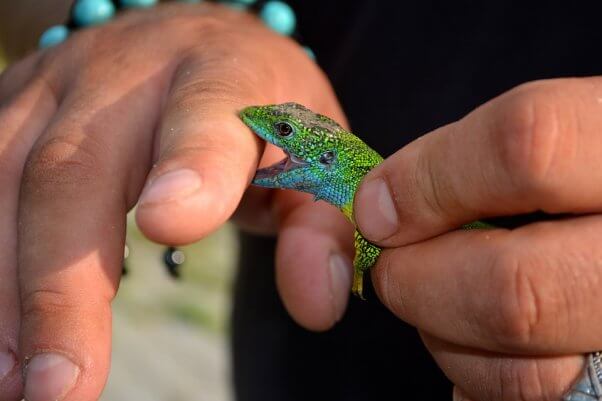
Animals such as guinea pigs, sugar gliders, spiders, and snakes can also easily nip or bite students if they feel threatened, frustrated, or even hungry. Small animals are often handled roughly by eager students (many of whom have absolutely no experience doing so) and can become scared and uncomfortable, which could cause them to lash out in self-defense.
Animals in the Classroom Are at Risk of Abuse
Sadly, unintentional neglect isn’t the only threat that classroom “pets” face. Even in the best of situations, animals in classrooms are at risk. Nearly every week, PETA learns about animals who have been hurt or killed by young people (and we assume that countless other incidents go unreported). PETA has also received many reports of neglect and awful cruelty to animals who are kept in schools. The following incidents are a few of them:
- Arlington, Texas: A group of high school students strangled a classroom “pet” ferret to death during class, allegedly to elicit a response from their teacher.
- Beaverton, Oregon: A gerbil who was sent home with a student endured a broken back and died after being played with recklessly. A rabbit was killed by a dog after being sent home with another student.
- Cape Coral, Florida: A rabbit who was allegedly kept with three others in a wire cage at a school died after being chased during a weekend.
- Helena, Arkansas: A snake was stolen from his classroom enclosure and cooked to death in a school microwave.
- Hoboken, New Jersey: An African dwarf frog died after apparently being overfed by a kindergarten student.
- Lawrence, Kansas: A rabbit at the Hilltop Child Development Center died after his tail was apparently pulled off.
- Melbourne, Victoria, Australia: A rabbit was found decapitated and the body strewn about the campus, and a guinea pig died from shock at Smith Street Early Learning Centre.
- Monterey, California: A goldfish being kept as a “pet” in a middle school classroom was killed after bleach was poured into his water.
- Orlando, Florida: Several snails died after students purposefully shook the jars in which they were being kept. The animals were being used as part of a cruel bottle biology experiment in a science classroom.
- Santa Rosa, California: A hamster was tortured and killed at Northwest Prep Charter School during a break-in by five juveniles between the ages of 11 and 14.
- Staten Island, New York: A hamster was stolen from Eden II School during a burglary and was never recovered.
- Tampa, Florida: Nine gerbils died after they were deprived of food and water for more than two weeks, finches died of exposure, and a ball python froze to death in the head of the science department’s classroom at Freedom High School.
- Yorktown, Virginia: A gerbil in a Grafton High School classroom was allegedly killed by a student who became upset. The student was charged with cruelty to animals.
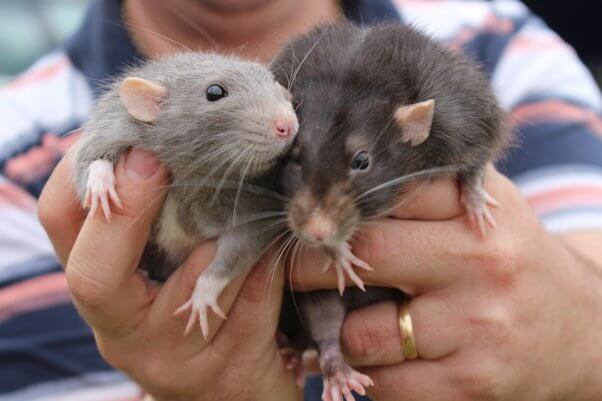
Having Animals in the Classroom Supports Cruel Breeders and the Hidden Horrors of the Pet Trade
Many small animals used as class “pets” come from awful breeding facilities, where they’re kept in horrific conditions, deprived of proper veterinary care, and left vulnerable to abuse. Breeders also directly contribute to the severe animal-overpopulation crisis and destroy the chances that animals in shelters have of finding good homes.
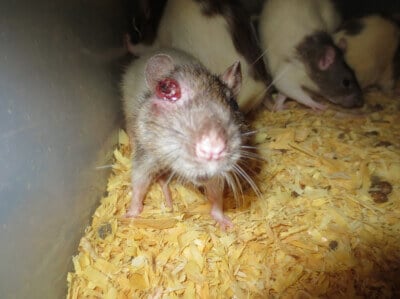
There Are Better Ways to Teach
Kids can learn responsibility and develop respect for animals in countless ways that don’t put a single animal at risk. Teach responsibility through community service projects and by caring for plants and/or a school garden. Teach children about the life cycle and animal behavior by observing local wildlife, watching high-quality documentaries, or using computer programs. Children should never be misled into thinking that animals are classroom tools—there’s never an excuse to put an animal’s well-being at risk. Every lesson that can be taught with live animals can also be taught in kind and thoughtful ways that don’t jeopardize anyone’s life.

Respecting Animals Means Leaving Them Out of the Classroom—so What Can You Do?
- Say no to classroom “pets” and yes to humane teaching methods. Pledge NEVER to keep animals in your classroom, and share information with your students and staff about why you choose to do so. Choose enriching classroom activities that show students to respect, care for, and empathize with animals without keeping them in unnatural situations or putting them at risk. Be creative—animals are living beings, not teaching tools, and there are much better ways to instill important lessons in children.
- Speak up for animals at risk in your school. If your school is keeping animals—either as “pets” or as teaching “tools”—voice your disagreement! If you’re comfortable doing so, communicate with the staff members involved, explaining the cruelty inherent in the pet trade and in keeping animals in the classroom, along with the many risks that are involved and the message that it sends to students.
- Change your school’s policy. You can even write a letter to your principal and school board members, asking them to implement a policy regarding keeping animals in the school. Be sure to include all the pertinent information, and contact usif you need any assistance!
- Remember, it’s never too late to do what’s right. If you already have an animal in your classroom, please make the compassionate decision either to take the animal home or to find a sanctuary where he or she can live peacefully and with appropriate care. Explain to your students why you’re making this decision and use it as an honest, teachable moment.
Living beings should never be put in danger in order to be used as an example or part of a lesson. Just because we can do something doesn’t mean that we should do it—and when it comes to keeping animals in the classroom, the risks to the animals’ well-being will always outweigh any potential benefits to the students (which can easily be achieved through kinder means). It’s our responsibility to make sure that we treat animals with respect, dignity, and their best interests in mind—and teach our students to do the same.
Every teacher can lead with compassion. Join TeachKind for free to receive lesson plans, classroom ideas, tips on humane education, and more!
By submitting this form, you’re acknowledging that you have read and agree to our privacy policy and agree to receive e-mails from us.


